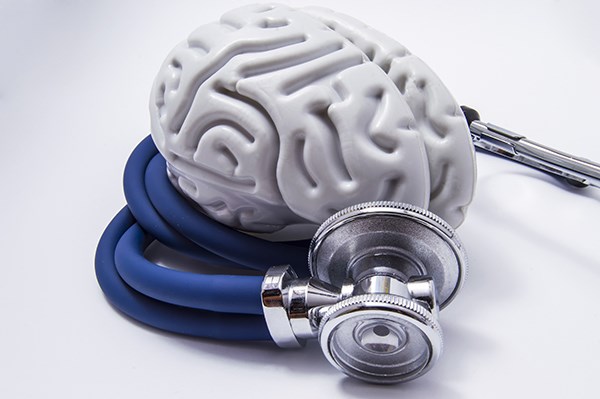Seizure Treatment in Ayurveda
ayurvedic treatment for seizure in kerala, india

What is an epileptic seizure?
Apasmara (Apa = loss, smara = memory, knowledge, or even awareness) is the name given to epilepsy (seizure). Seizures characterize the disorder Akshepaka. Seizure treatment in Ayurveda (Kerala, India), convulsions are induced by an imbalance of the Vatadosha. In terms of the doshic effect, Pitta dosha is associated with loss of consciousness.
When a person loses consciousness shortly after seeing the hues red, blue, or black and then quickly recovers, this is a symptom of Vata disruption. Pitta hallucinations are characterized by seeing the light, dark red, or yellow colors, followed by heavy sweating.
Seizure is a neurological disorder in which a person loses consciousness owing to an overabundance of electric discharge from the brain’s neurons. A seizure might last anywhere from a few seconds to many minutes.
Epilepsy is called apasmara in Ayurveda, while seizures are called akshepaka. The Ayurveda Treatment in Kerala includes therapies and herbal drugs necessary to reduce the effects of this long-term ailment.
Different types of seizures in Ayurveda (Kerala, India)
Seizure is classified into four categories by Ayurveda, based on which dosha is out of balance.
● Vata seizures (produced primarily by corrupted vata) last for a shorter period of time (relatively), increase breathing rate, cause saliva to be secreted from the mouth, and create strange bodily movements.
● Pitta seizures (which are caused mainly by corrupted pitta) result in a yellowish or reddish hue to the skin, excessive sweating, and yellowish froth from the mouth. Following the seizure, patients report extreme heat and intense thirst.
● Kapha convulsions (caused mainly by corrupted kapha) last longer (relatively), create yellowish froth from the mouth, and the sufferer feels heaviness in the body afterward.
● Sannipatik seizures are produced by the corruption of all three doshas, and as a result, they exhibit a variety of symptoms.
SEIZURE TREATMENT GUIDELINES (kerala, India)
The importance of a doctor’s consultation in diagnosing and treating seizures cannot be overstated. To deliver a whole clinical experience, medication, therapy, and lifestyle work together. The good news is that Ayurveda has a cure for seizures – at least to a considerable extent, it can be treated so that you can live completely everyday life.
The Ayurvedic Treatment for Seizure (Kerala, India) at ISHANI AYURVEDA focuses on curing the disease of its origin. Some of the essential treatments are discussed below:
- Counseling: Support and counseling can help people overcome sadness and anxiety and improve medical effects.
- Panchakarma: Strong detoxification therapies, such as panchakarma, are strongly suggested in such instances. The vitiated dosha will determine the purification process used to restore normal brain function.
- Vatadosha: In this case, enema (basti) is used to cleanse the body and regulate Vatadosha. Stress, lack of sleep, and intense mental stress aggravate this dosha. This type of seizures can also be caused by constipation or GI tract issues. Vata can be soothed by using a medicated oil massage (abhyanga) or pouring a stream of oil on the head (Shirodhara), which can also relax the mind. Herbs like shankhapushpi, ashwagandha, and Brahmi are employed to normalize brain activity.
- Pitta Dosha: Purgation is used to treat the aggravation of the Pitta dosha (virechana). High humidity usually causes this dosha to be disrupted. Diseases such as encephalitis and head inflammation are possible causes of epilepsy caused by Pitta Dosha.
- Kapha Dosha: Toxins are removed from the body by producing vomiting in the KaphaDosha (Vamana). Obstruction of the neurological system is the most common reason. One of the most common signs of Kaphic epilepsy is excessive saliva output. A sedentary or inactive lifestyle may be the catalyst. The herbs tulsi and calamus root are commonly used to treat Kapha epilepsy.
- Rasayana Therapy fosters full synchronization of mind and body for a healthy life by rejuvenating and revitalizing the body and mind. PanchayagavyaGhrita, MahapanchagavyaGhrita, VachadhyaGhrita, and other herbs are used in the Ayurvedic treatment of seizures in Kerala, India.
Outcome of seizures (kerala, India)
Seizure is a chronic illness that necessitates long-term Ayurveda medicine (Kerala, India). People frequently take the prescription for a few weeks to months and then abruptly stop taking it, believing that their problem has been resolved. However, the underlying pathology will not be thoroughly examined. This causes the attacks to appear suddenly, necessitating the patient’s restarting the medicine. As a result, it is a condition that requires ongoing monitoring by psychiatrists and physicians. In addition, the medications must be taken for some time (Seizure Treatment in Ayurveda). Individuals and their families are at risk if they have a rudimentary understanding of the disease.
FAQs
- Is it true that exercise can help with seizures?
Exercise is beneficial to everyone, but it is especially beneficial to persons with seizure. Physical activity can occasionally cause seizures, but this is uncommon. Physical activity does not worsen epilepsy in general, and in many circumstances, it may even help seizure control by improving overall health.
- What causes seizures?
A seizure happens when aberrant electrical signals from one or more brain areas disrupt standard brain signals. A seizure can be caused by anything that disrupts the usual connections between nerve cells in the brain.
- Is it possible for stress to trigger seizures?
Seizures can also be caused by emotional stress. Emotional tension is frequently linked to a circumstance or event that holds particular significance for you. For example, it could be a circumstance in which you feel powerless. Worry or fear, in particular, is the type of emotional stress that causes the majority of seizures.
- How long does it take for a seizure to pass?
Some people recover quickly, while others take minutes to hours to get back to normal. The sort of seizure and which portion of the brain it affects impact the recovery period – how long it lasts and what happens during it.
